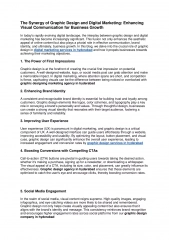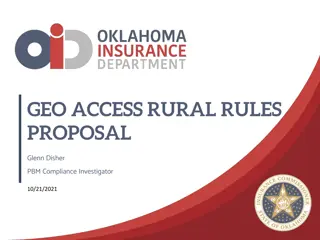INVESTIGATOR BROCHURE
The Investigator's brochure (IB) provides essential clinical and nonclinical data on investigational products, aiding investigators in trial preparation and management. It covers key aspects such as dosing, administration methods, and safety procedures, helping clinicians assess trial suitability and manage risks effectively.
Download Presentation

Please find below an Image/Link to download the presentation.
The content on the website is provided AS IS for your information and personal use only. It may not be sold, licensed, or shared on other websites without obtaining consent from the author.If you encounter any issues during the download, it is possible that the publisher has removed the file from their server.
You are allowed to download the files provided on this website for personal or commercial use, subject to the condition that they are used lawfully. All files are the property of their respective owners.
The content on the website is provided AS IS for your information and personal use only. It may not be sold, licensed, or shared on other websites without obtaining consent from the author.
E N D
Presentation Transcript
INVESTIGATOR BROCHURE
Introduction The Investigator s brochure (IB) is a compilation of the clinical and nonclinical data on the investigational products that are relevant to the study of the products in human subjects. The information should be presented in short, simple, objective, and non- promotional from that enables a clinical or potential investigator to understand it. It is prepared by sponsor. The information should be presented in a concise and simple manner
Purpose of IB To Provide the information to investigators and others involved in the trial with information such as the dose, dose frequency/interval, methods of administration and safety monitoring procedures. For assessment of appropriate proposed clinical trial a medically qualified person should be participate in editing of IB. The IB also provides insight to support the study, subjects to clinical management during the course of the clinical trial. IB enables a clinician or potential investigator, to understand it and make his/her own unbiased risk benefit assessment of the appropriateness of the proposed trial
General considerations The IB should include: i. Title Page: This should provide the Sponsor s name Product Research number Name(s): chemical, generic (if approved) & trade name(s) Edition number Release date Replaces previous edition number Date ii. Confidentiality statement: The sponsor may wish to include a statement instructing the investigator/recipients to treat the IB as a confidential document for the sole information and use of the investigator s team and the IRB/IEC
Contents of the Investigators Brochure: The IB should contain the following sections: 1. Table of Contents 2. Summary: A brief summary (preferably not exceeding two pages) should be given, highlighting the significant physical, chemical, pharmaceutical, pharmacological, toxicological, pharmacokinetic, metabolic, and clinical information available that is relevant to the stage of clinical development of the investigational product(IP).
3. Introduction: Contains the chemical name (and generic and trade name(s) when approved) of the IP, all active ingredients, the IP(s) pharmacological class and its expected position within this class (e.g., advantages), the rationale for performing research with the IP(s), and the anticipated prophylactic, therapeutic, or diagnostic indication(s). General approach to be followed in evaluating the IP
4.Description of IP A brief summary should be given of the relevant physical, chemical, and pharmaceutical properties. A description of the formulation(s) to be used, including excipient, should be provided and justified if clinically relevant. Instructions for the storage and handling of the dosage form(s) should also be given
5.Nonclinical Studies The results of all relevant nonclinical pharmacology, toxicology, pharmacokinetic, and investigational product metabolism studies should be provided in summary form. The information provided may include: Species tested, Number and sex of animals in each group, Unit dose (e.g., milligram/kilogram (mg/kg)), Dose interval, Route of administration,
Duration of dosing, Information on systemic distribution Duration of post-exposure follow-up Results: including the following aspects: - Nature and frequency of pharmacological or toxic effects; - Severity or intensity of pharmacological or toxic effects; - Time to onset of effects; - Reversibility of effects; - Duration of effects; - Dose response.
Nonclinical Pharmacology A summary of the pharmacological aspects of the investigational product and, where appropriate, its significant metabolites studied in animals should be included. Pharmacokinetics and Product Metabolism in Animals A summary of the pharmacokinetics and biological transformation and disposition (getting a drug into its appropriate position in the body and in an appropriate concentration) of the investigational product in all species studied should be given.
Toxicology The study of the adverse effects of chemicals on animals A summary of the toxicological effects found in relevant studies conducted in different animal species should be described under the following headings where appropriate Single dose Repeated dose Carcinogenicity Special studies (e.g., irritancy and sensitization) Reproductive toxicity Genotoxicity (mutagenicity).
6. Effects in Humans A thorough discussion of the known effects of the investigational product(s) in humans should be provided, including information on pharmacokinetics, metabolism, pharmacodynamics, dose response, safety, efficacy, and other pharmacological activities. Where possible, a summary of each completed clinical trial should be provided.
(a) Pharmacokinetics and Product Metabolism in Humans: Pharmacokinetics (including metabolism, absorption, plasma protein binding, distribution, and elimination). Bioavailability. - Population subgroups (e.g., gender, age, and impaired organ function). Interactions (e.g., product-product interactions and effects of food). (b) Safety and Efficacy : Safety, pharmacodynamics, efficacy, and dose response that were obtained from preceding trials in humans(healthy volunteers and/or patient)
7. Summary of Data and Guidance for the Investigator This section should provide an overall discussion of the nonclinical and clinical data of IP. IB provide the investigator a clear understanding of: The possible risk Adverse reaction Observation & precaution needed for the clinical trial.























